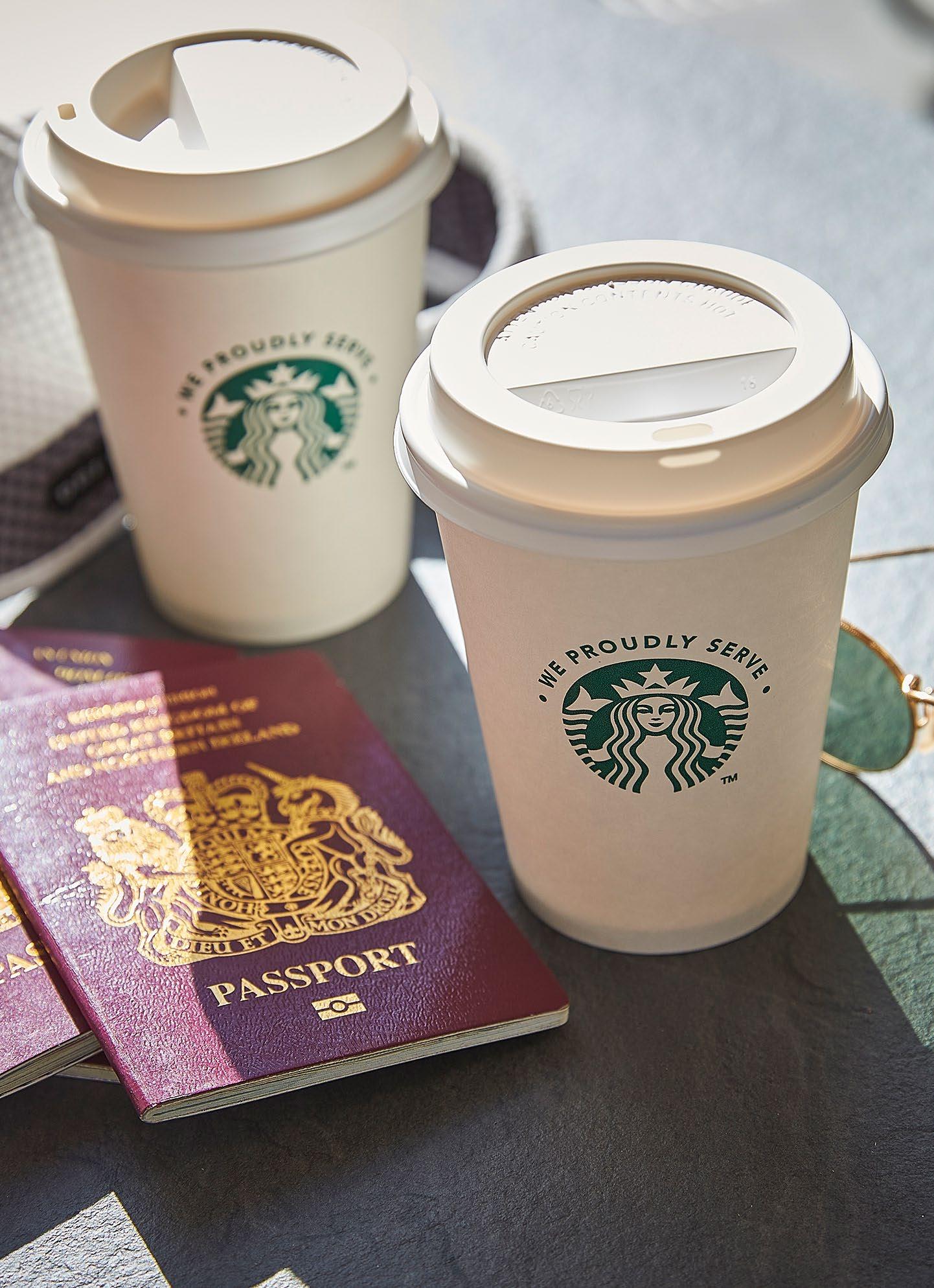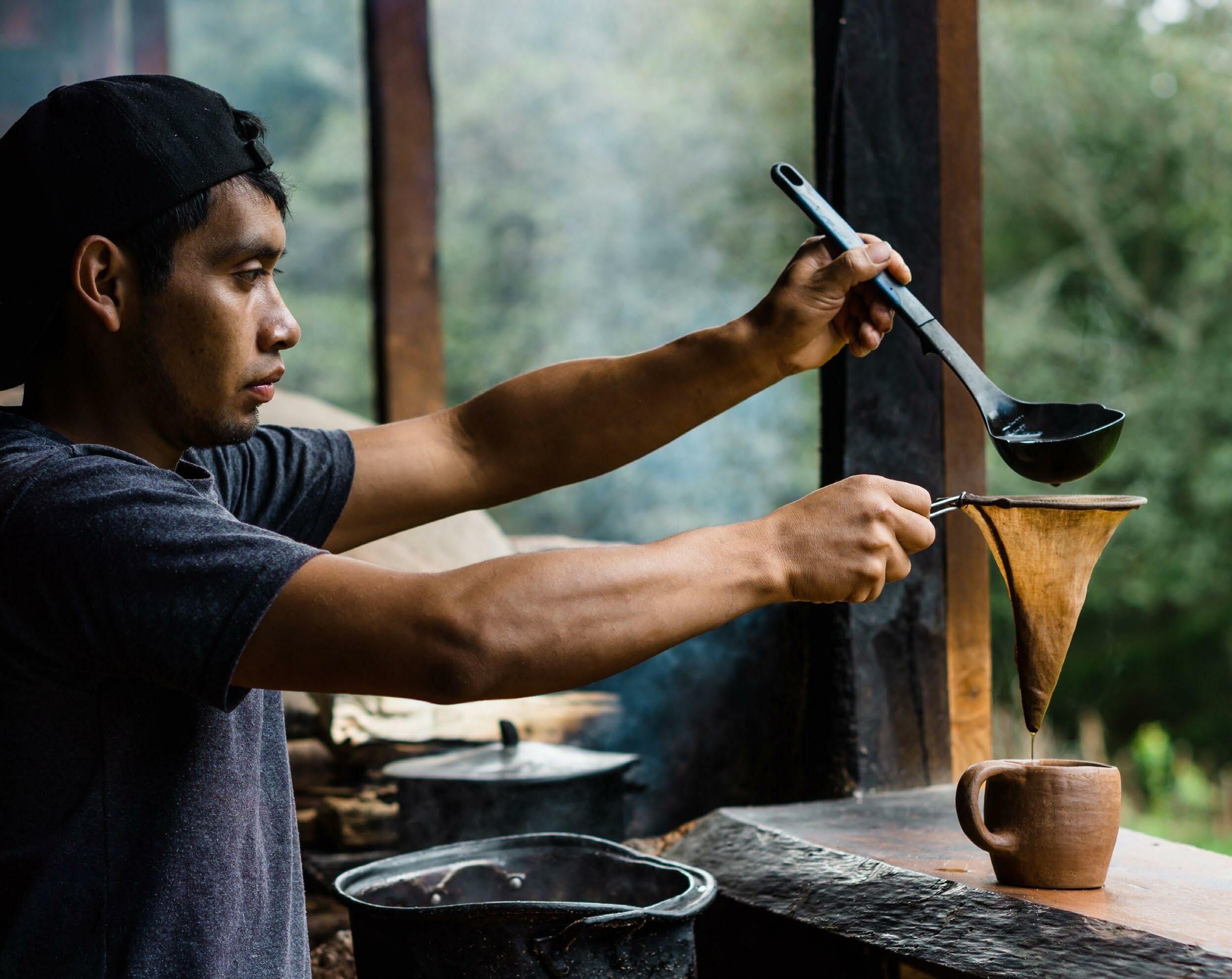COFFEE NOTES




Welcome to the January/ February issue of Coffee Notes. To bring in the new year, we’ll be showing you how you can explore the world with coffee throughout the year and how adopting a European philosophy to consuming coffee can help you find time to appreciate your favourite coffee. We’ll also take a deep dive into coffee competitions and the role they play in the industry and introduce a brand-new section – ‘The takeaway’ – where we’ll summarise some key takings from the issue for you in a quiz!
As always, we’re here if you have any questions or want to talk through anything you’ve read here today. You can get in touch with us at: coffeepartners@uk.nestle.com

Coffee is a global beverage enjoyed by millions, but place two coffees next to one another – one from your typical espresso bar in Italy, another from Melbourne –and you’ll taste two completely different experiences. This is the wonderful thing about coffee’s diverse nature. It can be grown, processed , roasted and brewed in so many interesting ways. The end result? A coffee that can encapsulate a culture and define how they vary and change over time. Each cup – from café to café, country to country, continent to continent – tells a story and takes the consumer on a journey.
And coffee enthusiasts love to explore. So, there’s little better way for an enthusiast to travel than through coffee. To kick off this year, let’s see how you can travel the world without having to empty your bank account, by tasting coffees from growing regions around the world .


Latin America is the foundation to many of the world’s most cherished blends, with its well-known consistency in taste, quality and medium acidity. This region has many processing methods, influenced by the contrasting microclimates and soils. If you’ve ever wanted to climb a volcano, perhaps a Costa Rican blend is your safer, more delicious route to take, as the volcanos actually influence the taste profiles of the coffee grown there!
What you can expect: Notes of berry, cocoa, nut, spice and sometimes even fruit.
If you’re seeking nostalgia, look no further than a blend from the birthplace of coffee, Ethiopia. But equally, if you’re after something wild and exciting, African blends will provide some of the world’s most vibrant, unique and lush flavours.
What you can expect: Vivid notes of floral, fruit and berry.

If you’re brewing a coffee from this region, expect bright, full-bodied and spicy flavours that are bound to dance on your tastebuds, as it’s a common practice in the Middle East to add spices such as cinnamon, saffron or cloves to the brewing process.
What you can expect: Notes of spice, chocolate and nuts.

This large region is home to coffees with big and bold flavours unlike anywhere else. If you find a blend from Indonesia or Vietnam, expect distinct, rich, earthy tones with a fruity taste and nutty aroma that will certainly take you on a memorable trip. Once you’ve enjoyed such delicate, earthy flavours, your tastebuds may never want to return!

What you can expect: Silky, rich and earthy notes of dark chocolate, wild spice and fig.
Beans from these growing regions can pop up in cafés all around the world, many of which will advertise exactly where their beans come from. But from there, the coffees they brew can catapult you even further or closer to home with coffees that are synonymous with idealistic destinations across the globe. Order a flat white and you’ll get a taste of Melbourne. Go for an espresso and you’ll feel like you’re deep in the streets of Milan. If the open road beckons, an americano or filter coffee will have you heading west in the USA. A café au lait? Bonjour, you’re in Paris. Each cup of coffee can be a ticket to anywhere in the world. So, the next time you’re ordering coffee beans for home, or seeking out a coffee from your local café, take note of what’s on offer and see how the world is well within your reach.
The world of coffee changes every year. New technology, research and environmental challenges mean industry professionals always have to be switched on, not least because these things influence trends which affect their businesses. Here’s a selection of trends we’re keeping an eye out for this year…

When we said you can travel the world through your tastebuds this year, it was only part of a much larger trend predicted for 2023 – coffee tourism. This brings a whole range of possibilities, from getting a flavour of destinations around the world, to physically going to them. So, whether it’s travelling to a coffee’s origin to experience how the beans are grown and processed, pinning a hot coffee spot in a foreign land to get an authentic local experience of another culture, or getting a taste of the world from the comfort of home, coffee tourism is going to be a hot topic this year.
Now that cafés have been back open again for some time, we’ve already seen a significant comeback of coffee drinkers and experience seekers flocking to their favourite coffee spots. But with hybrid working here to stay, workers – especially young ones without families – will be seeking ways to escape cramped home shares and home offices for new inspirations and atmospheres to keep productivity up. Cafés continue to adjust (and in some cases, reinvent themselves) to cater to this new normal, becoming the spaces where these professionals want to go. So, we only see cafés continuing to attract people as the year progresses.
According to World Coffee Portal research, oat drink is now the alternative favourite at coffee shops, surpassing coconut.¹ With social media influencers continuing to explore new ways to make use of by-products from soy, oat and almond products, as well as the continued rise in milk alternatives popularity, it’s well worth keeping an eye on what innovations, variations and new flavours appear this year.

Demand for the coffee industry to break away from singleuse plastic is an ongoing trend that shows no sign of stopping or slowing down – with a third of customers preferring more sustainable options and over a third choosing them over cheaper, less sustainable options. 2 This stretches from takeaway cups to the lids and sleeves that complement them. The challenge for coffee brands is how to meet the growing demand for sustainable packaging and clearly show how to recycle it properly.
Coffee-less coffee sounds a bit like decaf coffee, right? Well, unlike decaf coffee, coffee-less coffee doesn’t use coffee beans at all… Climate scientists have warned that coffee plants are becoming increasingly at risk due to climate change 3 and so the industry has started to find authentic and drinkable alternatives. We expect this to be hot on the lips of the coffee industry as the year progresses, with further development in this space happening all the time.
1 Allegra World Coffee Portal, Project Cafe UK 2022 2 surverymonkey.com 3 Waitrose Food and Drink Report 2022-23
HOW WE CAN ADOPT A EUROPEAN PHILOSOPHY WHEN IT COMES TO CONSUMING AND ENJOYING COFFEE TO ITS FULLEST POTENTIAL
'Coffee to go' is an all too regular phrase in today’s society. We’re always going somewhere, or late for something, or inbetween two very important meetings. Too often, perhaps, we consume coffee as a means to function and ‘get by’, rather than enjoying the craft that’s gone into it. Rarely do we ever have time to sit down and leisurely sip a fresh brew and watch as the world passes by.
If we take a look into European culture and how coffee is consumed in capital cities outside the UK, we see a different approach – a slower, more purposeful way to drink coffee. It’s a culture that knows how to savour it. How? By making it about more than just the beverage, but the overall experience. It’s a ritual – a time of the day set aside for drinking coffee, either alone or with friends. In making it more about the overall experience, it allows more time to enjoy the beverage and the little intricacies that can be found within a fresh brew.
Coffee is almost synonymous with Italian culture . While the espresso has become associated with a fast-paced, on-the-go life; in Italy, they’re to be enjoyed at the bar with a newspaper. A coffee break in Italy, no matter the time of day, can extend for hours before people head back to their daily obligations.

Coffee in France is almost always enjoyed inside the café – rarely will you ever find someone taking their coffee to go. Neighbourhood cafés on nearly every street corner, with tables pouring out onto the streets, are typically full of people either preparing for the day ahead or simply relaxing and watching people pass by.

In Greece, coffee is commonly consumed at places called ‘Kafenía’, mostly found in villages or tourist hotspots. Here, locals meet, play távli (backgammon) and discuss politics and the matters of the day. You’ll rarely find someone enjoying a coffee alone. Community is everything and coffee is at the epicentre of it.
So, how can you adopt this European philosophy when drinking coffee? While it’s difficult to extend a coffee break, you can deepen it...
This is a quick win to being more present. Without the distraction of emails and notifications, you allow your mind and senses to focus. Bring a book, read a paper, or simply smell the coffee’s aroma, notice the mouthfeel and tasting notes, soak in the atmosphere and listen to the chitter-chatter of the world as it passes you by.
Set boundaries
If you need a few minutes to refresh your mind, letting others know you’re taking a coffee break (and don’t want to be disturbed!) will make your coffee experience a lot easier. Make it clear that you’re going to a café and you’re going to drink your coffee there. Setting that intent and those boundaries will set you up for a ritualistic experience.
Share it with friends
Go Greek and make it an event to share with friends. Whether it’s during a lunch break or on a day off, sharing that time with friends will be as beneficial to your mental wellbeing as it will be to your coffee experience.
With a European philosophy, it’s not just your coffee that you’ll be appreciating, but perhaps more importantly, your own time.
5-MIN READ

Coffee competitions are popular in the speciality coffee industry and they appear at every level of it. From local latte art slams to regional, national and international barista championships, there’s a spectrum of competitions for multiple disciplines. We’re going to take you through a selection of Specialty Coffee Association (SCA) competitions in the UK, tell you where you can find them and what you can do if you’re ever wanting to compete.
Before we go into the detail of what competitions there are, let’s see the value they hold in the coffee world first.
Competing at coffee competitions isn’t for everyone and it’s only a certain percentage of baristas and coffee connoisseurs that want to test their skills to progress further in the industry. For many, competing is about more than just winning - it's about bettering craft, learning more about coffee and networking first.
Whether you’re competing or not, coffee competitions are a great opportunity for learning new skills, making friends and creating connections with other industry professionals for potential future opportunities.
Similar to coffee festivals, they’re a celebration of craft and coffee. As it says on the SCA UK website, 'The UK Coffee Championships are not just about winning; they are about learning, networking and meeting people who share a passion for great coffee.'

The UK Barista Championship showcases the best baristas in the nation and the winner of this goes on to compete in the World Barista Championship – the hosting city of which changes from year to year. Within a 15-minute routine period, a competing barista has to prepare and create four espressos, four milk-based beverages and four original signature drinks to testing standards.
World Coffee Events (WCE) certified judges evaluate each performance on: - the taste of the beverages served - the cleanliness throughout the process - the creativity showcased (especially in the signature drinks stage) - the technical skill - the overall presentation.
This focuses on the craft of hand-brewing filter coffee and promotes excellence in manual coffee brewing and service. Competitors prepare and serve three separate beverages before a panel of judges.
This is the only competition where competitors can use alcohol and invites both baristas and bartenders to compete. Every competitor prepares an Irish coffee as well as their own signature coffee cocktail (hot or cold). They’re judged on their technical skills, the visual appeal of the cocktails and their flavour.

This is a three-stage event where competitors are judged by their performance on:
1) Evaluating the quality of the green coffee.

2) Developing a roasting profile that best articulates the desired characteristics of that coffee.
3) On the resulting cup quality of the coffees roasted.
Where the top palates of the UK coffee industry come together. Competitors here have to slurp and swig their way through eight separate sets of ‘triangle tests’ (three cups of coffee where two are the same and one is different) and single the odd one out. As the competition progresses, the coffees become more similar, making it increasingly difficult to taste the difference. The odd cup will always have a red dot underneath it, so competitors know immediately if they’re right or wrong.
The place for pouring perfection. Competitors showcase their silky latte art skills by pouring matching pairs of coffees with the most complex and visually pleasing latte art designs possible.

SCA rules state that this championship, as well as the barista championship, must use dairy milk. However, in an open letter to the SCA in Germany this year, a barista competitor demanded SCA practices to allow the use of milk alternatives in SCA competitions. While this open letter has created traction on social media, it remains to be seen whether the desired changes will happen, though trends are suggesting that this change would be favourable.
The SCA UK organises the national championships, from which point the winners go on to compete in the world championships.
Practice is everything
When it comes to competing. It sounds obvious but can’t be stressed enough. Judges will assess everything, so master your beverages and techniques – from espresso prepping to latte art pouring – and you’ll have the solid foundations for a great run.
Time management is another essential part of competing.
You’ll often only have 15 minutes to prepare a range of drinks, so you’ll need to manage your time wisely to finish your routine on time. Keep in mind brewing methods and beverages that’ll require resting so you can work on other things.
Showcase your artistry with a little dose of creative flair.
It doesn’t have to be too technical and could be anything from combining interesting flavours to developing a different latte art design. You could even take inspiration from Leah Ritsema – a competitor at the 2020 US Coffee Championships – who used an edible bubble to capture Earl Grey smoke on an espresso shot! Be confident in your routine.
You’ve practiced and perfected it, so show yourself some faith when the big day arrives. Your confidence will rub off on the crowd, but most importantly, the judges. These coffee competitions run every year and new dates are added to the SCA website . But there are also plenty of local competitions taking place at coffee spots throughout each year, so keep an eye out in your local cafés and on social media for competition announcements - and if you’re wanting to compete… get practicing!
Got some extra minutes to spare? Have a few sips left of your brew? Have a go at this quiz, test your beans and see how much of this issue has soaked in…
Where is the birthplace of coffee? How many Brits drink plant-based milk alternatives?
In the Middle East, what spices can be added to the brewing process?
What are places in Greece called where people meet for coffee? What does the SCA UK say the UK Coffee Championships are all about?
Ethiopia.
Cinnamon, saffron or cloves. What are the five trends to look out for this year?
In the barista championship, what five aspects are competitors judged on?
Essential reading: - 50 coffee terms you need to know
Hide One in three.
Coffee tourism, café culture, more milk alternatives and sustainable packaging. Kafenía.
Learning, networking and meeting people who share a passion for great coffee. Taste, cleanliness, creativity, technical skill and presentation.
Three ways you can make your coffee last longer
Nestlé Coffee Partners offers a range of brands and solutions to suit your customers’ requirements.

If you’d like to talk through any of what you’ve read and explore how we can help you leverage the insights we’ve shared in this issue, or if you’d simply like to catch up over a coffee, we’d love to hear from you.
We’re available on +44 (0)203 124 1029 (Option 2) or at coffeepartners@uk.nestle.com www.nestleprofessional.co.uk/coffee